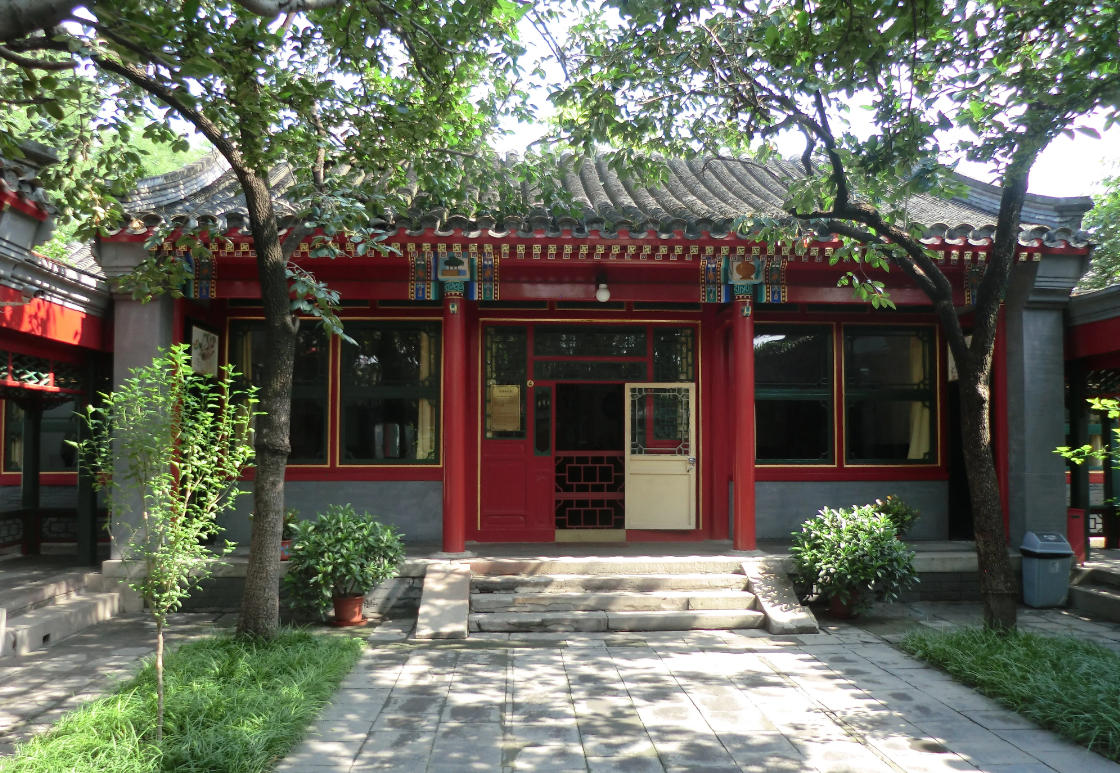AI Fire and Smoke Detection System Application at the Mei Lanfang Former Residence
The application of AI-based fire and smoke detection intelligent video analysis systems in cultural heritage protection, particularly the deployment of the system at the Mei Lanfang Former Residence, is an exemplary integration of modern technology with the preservation of traditional culture. This case highlights the design, implementation, and application of the Fuwei Fire and Smoke Detection System at the Mei Lanfang Former Residence in Beijing in December 2023.

Background Introduction
- Significance of the Mei Lanfang Former Residence: As the former residence of the renowned Chinese Peking opera master Mei Lanfang, this site holds significant historical and cultural value. It is also a key location for the inheritance of Peking opera art.
- Urgent Fire Protection Needs: Due to the age of the building and its primary wooden structure, the residence is at high risk for fires.
System Design
- Objective: The AI fire and smoke detection system customized for the Mei Lanfang Former Residence aims to provide early detection and rapid warning of potential fires.
- Technology Selection: The system uses advanced artificial intelligence, combining deep learning algorithms and image processing technology to achieve real-time smoke and flame detection.
Data Collection and Processing
- Camera Layout: High-definition intelligent cameras are installed in key areas of the residence to monitor potential fire hazards comprehensively.
- Dataset Construction: A large collection of images and videos of smoke and flames is gathered to train the deep learning model.
Model Training and Optimization
- Algorithm Implementation: Convolutional Neural Networks (CNN) and other deep learning models are employed to learn the features of smoke and flames.
- Model Tuning: Through continuous testing and optimization, the model’s accuracy and response speed are improved to function effectively in complex environments.
System Deployment and Application
- Real-Time Monitoring: The trained AI model is deployed in the residence’s monitoring system, enabling 24/7 real-time monitoring and analysis.
- Intelligent Alerts: Upon detecting smoke or flames, the system immediately triggers an alert mechanism, using both visual and auditory alarms and automatically notifying management personnel for a swift response.
System Testing and Iteration
- Simulation Testing: Multiple fire simulation tests are conducted at the residence to validate the system's reliability and effectiveness.
- Continuous Optimization: Based on feedback from testing and real-world application, the system is continually adjusted and upgraded to meet varying environmental and operational needs.
User Interface and Operation
- Intuitive Interface: A simple and intuitive user interface is developed, allowing management personnel to easily monitor system status and alarm information.
- Remote Control: Remote monitoring and control functionality are implemented, enabling managers to handle alerts and unusual situations promptly.
Legal, Regulatory, and Ethical Considerations
- Compliance with Regulations: The deployment and operation of the system are fully compliant with local laws and regulations, particularly in terms of data protection and privacy.
- Ethical Responsibility: Ethical considerations are prioritized in both the design and application of the system, ensuring the technology is used appropriately and responsibly.
Conclusion
The application of the AI fire and smoke detection intelligent video analysis system at the Mei Lanfang Former Residence has not only enhanced the efficiency and accuracy of fire prevention but also demonstrated how technology can aid in cultural heritage protection. With its intelligent monitoring and alerting mechanisms, the system effectively ensures the safety of this precious cultural heritage. Furthermore, it provides a new approach and solution for fire safety in similar locations. As the technology continues to develop and improve, such systems will play an increasingly important role in supporting the protection of traditional culture.
